If I understand your question, you are looking for a way to jump to a position and have that position centered in the RecyclerView.
Maybe you have tried RecyclerView.scrollToPosition() but that doesn't snap to the view. You may also have tried RecyclerView.smoothScrollToPosition() and that works better but you may want to avoid all the movement if you have a lot of items and are scrolling a long way.
The reason that scrollToPosition() doesn't work is that it doesn't trigger the LinearSnapHelper which uses a scroll listener to detect when to snap. Since smoothScrollToPosition() does trigger the LinearSnapHelper, we will use scrollToPosition() to get us in the area of the target view then use smoothScrollToPosition() to get the view centered as follows:
private RecyclerView mRecycler;
private void newScrollTo(final int pos) {
RecyclerView.ViewHolder vh = mRecycler.findViewHolderForLayoutPosition(pos);
if (vh != null) {
// Target view is available, so just scroll to it.
mRecycler.smoothScrollToPosition(pos);
} else {
// Target view is not available. Scroll to it.
mRecycler.addOnScrollListener(new RecyclerView.OnScrollListener() {
// From the documentation:
// This callback will also be called if visible item range changes after a layout
// calculation. In that case, dx and dy will be 0.This callback will also be called
// if visible item range changes after a layout calculation. In that case,
// dx and dy will be 0.
@Override
public void onScrolled(RecyclerView recyclerView, int dx, int dy) {
super.onScrolled(recyclerView, dx, dy);
mRecycler.removeOnScrollListener(this);
if (dx == 0) {
newScrollTo(pos);
}
}
});
mRecycler.scrollToPosition(pos);
}
}
Sample app
MainActivity.java
public class MainActivity extends AppCompatActivity {
private final LinearLayoutManager mLayoutManager = new LinearLayoutManager(this, LinearLayoutManager.HORIZONTAL, false);
private final List<String> mItems = new ArrayList<>();
private RecyclerView mRecycler;
private final int mItemCount = 2000;
private final Handler mHandler = new Handler();
private final LinearSnapHelper mLinearSnapHelper = new LinearSnapHelper();
protected void onCreate(Bundle savedInstanceState) {
super.onCreate(savedInstanceState);
setContentView(R.layout.activity_main);
for (int i = 0; i < mItemCount; i++) {
mItems.add(i + "");
}
mRecycler = findViewById(R.id.recyclerView);
final RecyclerViewAdapter adapter = new RecyclerViewAdapter(null);
adapter.setItems(mItems);
mRecycler.setLayoutManager(mLayoutManager);
mRecycler.setAdapter(adapter);
mLinearSnapHelper.attachToRecyclerView(mRecycler);
newScrollTo(1);
// fireScrollTo();
}
private int maxScrolls = mItemCount;
private void fireScrollTo() {
if (--maxScrolls > 0) {
int pos = (int) (Math.random() * mItemCount);
newScrollTo(pos);
mHandler.postDelayed(new Runnable() {
@Override
public void run() {
fireScrollTo();
}
}, 2000);
}
}
private void newScrollTo(final int pos) {
mRecycler.smoothScrollToPosition(pos);
RecyclerView.ViewHolder vh = mRecycler.findViewHolderForLayoutPosition(pos);
if (vh != null) {
// Target view is available, so just scroll to it.
mRecycler.smoothScrollToPosition(pos);
} else {
// Target view is not available. Scroll to it.
mRecycler.addOnScrollListener(new RecyclerView.OnScrollListener() {
// From the documentation:
// This callback will also be called if visible item range changes after a layout
// calculation. In that case, dx and dy will be 0.This callback will also be called
// if visible item range changes after a layout calculation. In that case,
// dx and dy will be 0.
@Override
public void onScrolled(RecyclerView recyclerView, int dx, int dy) {
super.onScrolled(recyclerView, dx, dy);
mRecycler.removeOnScrollListener(this);
if (dx == 0) {
newScrollTo(pos);
}
}
});
mRecycler.scrollToPosition(pos);
}
}
}
activity_main.xml
<android.support.constraint.ConstraintLayout
android:layout_width="match_parent"
android:layout_height="match_parent">
<View
android:layout_width="3px"
android:layout_height="match_parent"
android:background="@android:color/holo_red_light"
app:layout_constraintBottom_toBottomOf="parent"
app:layout_constraintEnd_toEndOf="parent"
app:layout_constraintStart_toStartOf="parent"
app:layout_constraintTop_toTopOf="parent" />
<android.support.v7.widget.RecyclerView
android:id="@+id/recyclerView"
android:layout_width="match_parent"
android:layout_height="match_parent"
android:clipToPadding="false"
android:paddingStart="660px"
android:paddingEnd="660px"/>
</android.support.constraint.ConstraintLayout>
RecyclerViewAdapter.java
class RecyclerViewAdapter extends RecyclerView.Adapter<RecyclerView.ViewHolder> {
private List<String> mItems;
RecyclerViewAdapter(List<String> items) {
mItems = items;
}
@Override
public @NonNull
RecyclerView.ViewHolder onCreateViewHolder(@NonNull ViewGroup parent, int viewType) {
View view = LayoutInflater.from(parent.getContext()).inflate(android.R.layout.simple_list_item_1, parent, false);
view.getLayoutParams().width = 220;
view.getLayoutParams().height = 220;
// view.setPadding(220 * 3, 0, 220 * 3, 0);
((TextView) view).setGravity(Gravity.CENTER);
return new ItemViewHolder(view);
}
@Override
public void onBindViewHolder(@NonNull RecyclerView.ViewHolder holder, int position) {
ItemViewHolder vh = (ItemViewHolder) holder;
String itemText = mItems.get(position);
vh.mItemTextView.setText(itemText);
int bgColor = (position % 2 == 0)
? android.R.color.holo_blue_light
: android.R.color.holo_green_light;
holder.itemView.setBackgroundColor(
holder.itemView.getContext().getResources().getColor(bgColor));
}
@Override
public int getItemCount() {
return (mItems == null) ? 0 : mItems.size();
}
@Override
public int getItemViewType(int position) {
return TYPE_ITEM;
}
static class ItemViewHolder extends RecyclerView.ViewHolder {
private TextView mItemTextView;
ItemViewHolder(View item) {
super(item);
mItemTextView = item.findViewById(android.R.id.text1);
}
}
public void setItems(List<String> items) {
mItems = items;
}
@SuppressWarnings("unused")
private final static String TAG = "RecyclerViewAdapter";
private final static int TYPE_ITEM = 1;
}
